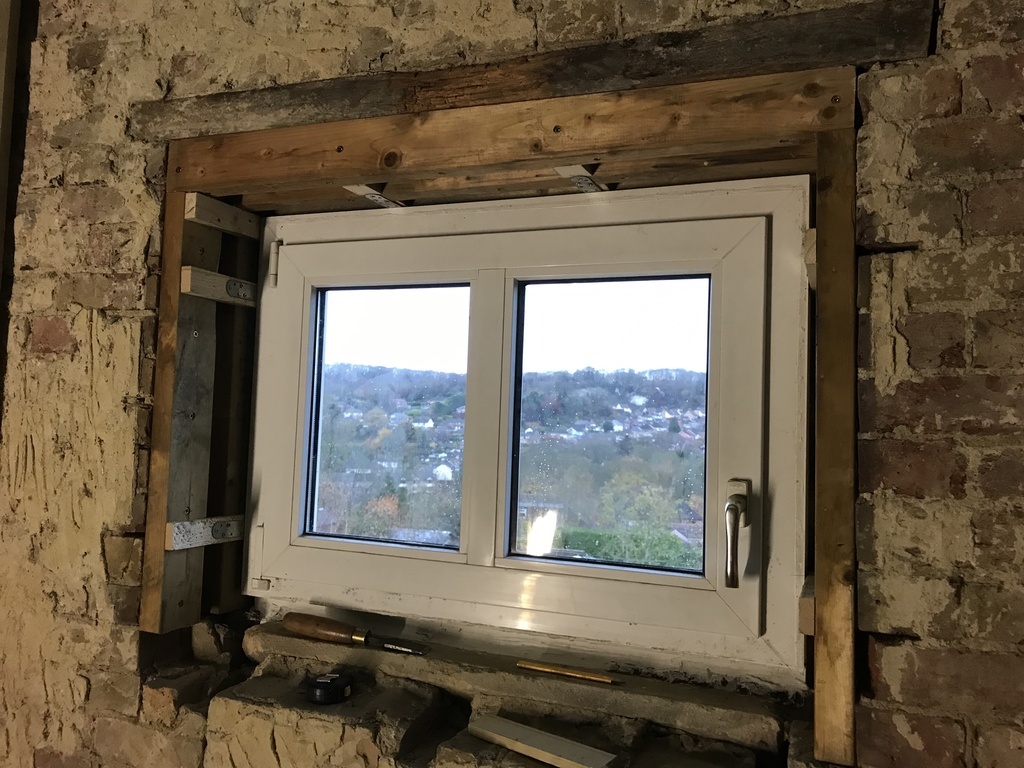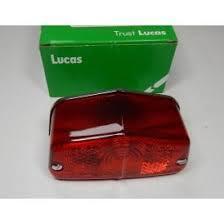Evening all. 😀
Some time ago now I promised an update that would contain steering components and profanity.
Sadly, we have had lots of rain and a mini ice age in the bit of the country nearest France, and to be brutally honest I just can’t face pulling the front axle apart while sitting in a frozen puddle just at the moment.
However, the old girl has been behaving pretty well since the manifold swap. It feels like it’s running smoother and quieter, even if that’s just psychological. This is good. 👍
The other day though, while manoeuvring at home, I noticed that the brake lights weren’t working properly. Again. 🙄
Those of you with elephantine memories will recall back when I uprated the brake pedalbox for a later version with a servo and dual circuit master cylinder, I opted to use the later mechanical brake light switch instead of the original hydraulic one. I did this for a couple of reasons, neither of which appear sensible now. The first reason was because the original 5-way brake union from the single circuit setup used an 1/8” NPT hydraulic switch with a vertical inlet port, and this needed to be replaced with a pair of three way ones to provide the split between the two circuits; the front being used as a T, the rear just as a union with the redundant port blanked off as I didn’t have a 3/8” UNF switch. The second reason was that I did have a couple of the later switches already, so thought I’d save a few pennies.
Here’s the original type of junction a switch:
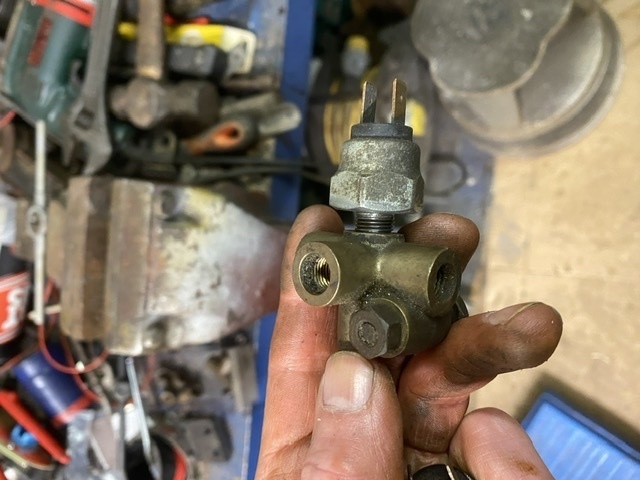
And these are the two that replaced it:
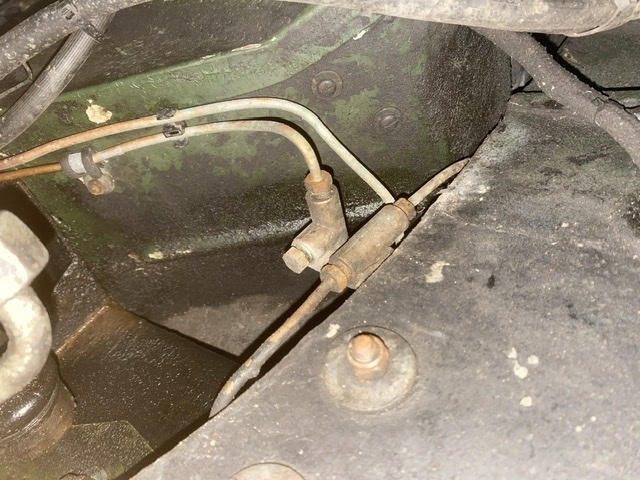
Along with one of these:
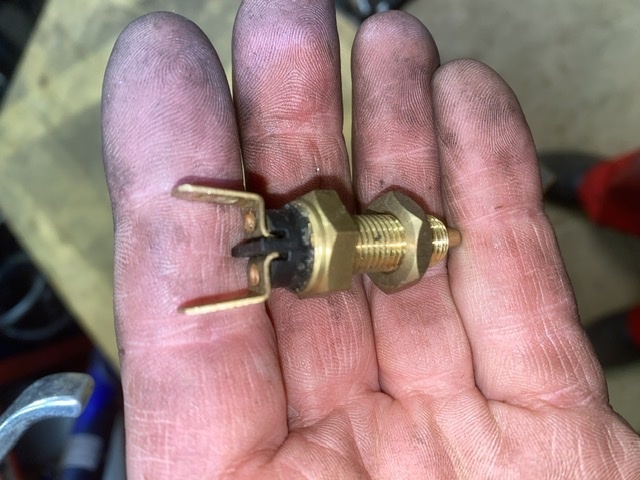
Mounted here:

Now, these later switches are known to be troublesome. Like I said, I used it because I already had one, and I didn’t have a 3/8” UNF hydraulic one to use in the new junction. They mainly give trouble when you regularly tow trailers as they’re ok switching 42W for two brake lights, but are marginal for 84W when you have four. In the past, on a mate’s Landry, I got around the issue by using it to switch a relay rather than the full current. They’re a bit fiddly to set up too, but access to them is good so I thought I’d give it a go. Sadly the first switch only lasted a few weeks. I replaced it with a new genuine “Lucas” branded item that lasted six months, despite costing about £15. I then tried a cheap Britpart branded one that was only £3, and looked identical down to the machining marks. That also stopped working after six months. After that I got a NOS one from a specialist, and that’s managed a year. Interestingly, all the other ones have failed off, and this last one was keeping them on all the time.
I decided enough was enough. I ordered a new hydraulic switch from Car Builder Solutions to suit the spare 3/8” UNF port I had, but with postage times being what they are at the moment, I thought it best not to wait until it arrived to do something about it.
A rumble through my stores turned up an old hydraulic switch that I’m pretty sure came off my Trabant in 1998 when I rebuilt its brakes. It’s stamped “DDR” and that’s the only thing I can think it would have come from. It’s thread was some bizarre tapered metric form, so I popped it in the lathe and spun it down to 3/8” and then cut a new thread on it.
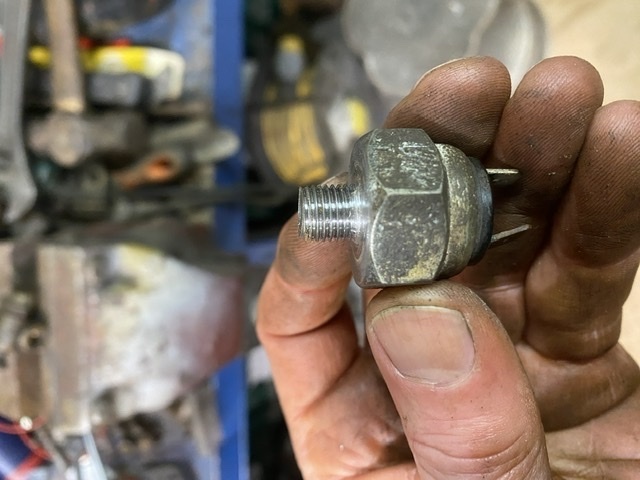
A quick removal of the blanking plug, a deftly applied finger and an equally quick install of the switch saved any need to bleed the brakes. In my experience the hydraulic switches are 100% reliable (so I should have stuck with them all along), but I’ve retained the relay for the time being. You’ll be pleased to know that the secondhand switch that’s been in my spares drawer for over two decades, and that came off a car that was over 30 years old at the time, worked perfectly.

Next job was pretty straightforward. I got two 60mm dia 135° silicone hoses (not blue), and a couple of joiners:
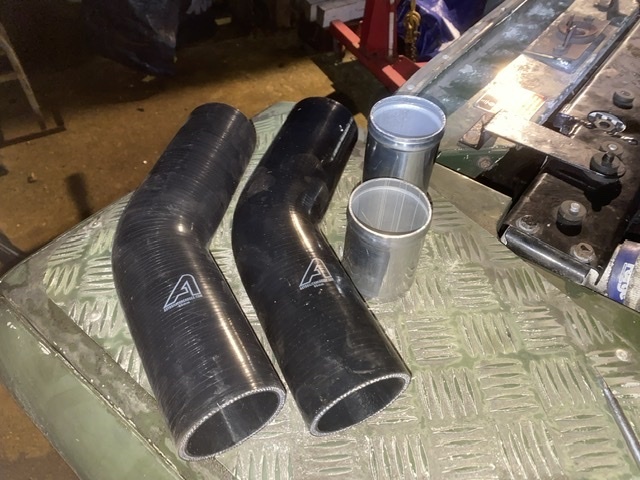
It only took a few minutes to swap them for the old hose and bit of exhaust pipe bodge. I’ll get some better fitting Jubilee clips at some point. These are just a little too big:
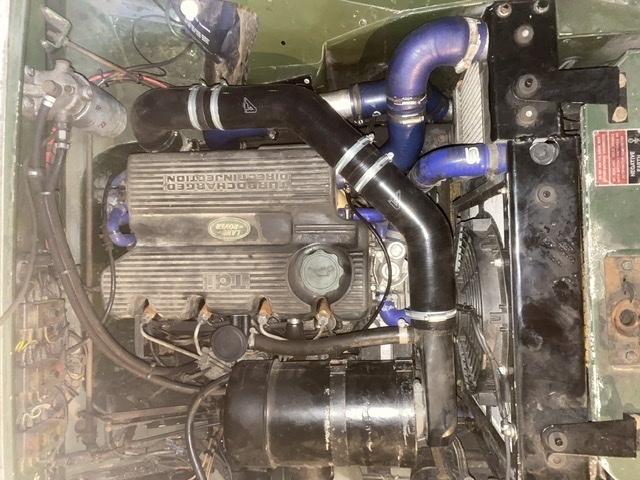
Pleased with that. 😀👍
Some time ago now I promised an update that would contain steering components and profanity.
Sadly, we have had lots of rain and a mini ice age in the bit of the country nearest France, and to be brutally honest I just can’t face pulling the front axle apart while sitting in a frozen puddle just at the moment.
However, the old girl has been behaving pretty well since the manifold swap. It feels like it’s running smoother and quieter, even if that’s just psychological. This is good. 👍
The other day though, while manoeuvring at home, I noticed that the brake lights weren’t working properly. Again. 🙄
Those of you with elephantine memories will recall back when I uprated the brake pedalbox for a later version with a servo and dual circuit master cylinder, I opted to use the later mechanical brake light switch instead of the original hydraulic one. I did this for a couple of reasons, neither of which appear sensible now. The first reason was because the original 5-way brake union from the single circuit setup used an 1/8” NPT hydraulic switch with a vertical inlet port, and this needed to be replaced with a pair of three way ones to provide the split between the two circuits; the front being used as a T, the rear just as a union with the redundant port blanked off as I didn’t have a 3/8” UNF switch. The second reason was that I did have a couple of the later switches already, so thought I’d save a few pennies.
Here’s the original type of junction a switch:

And these are the two that replaced it:

Along with one of these:

Mounted here:

Now, these later switches are known to be troublesome. Like I said, I used it because I already had one, and I didn’t have a 3/8” UNF hydraulic one to use in the new junction. They mainly give trouble when you regularly tow trailers as they’re ok switching 42W for two brake lights, but are marginal for 84W when you have four. In the past, on a mate’s Landry, I got around the issue by using it to switch a relay rather than the full current. They’re a bit fiddly to set up too, but access to them is good so I thought I’d give it a go. Sadly the first switch only lasted a few weeks. I replaced it with a new genuine “Lucas” branded item that lasted six months, despite costing about £15. I then tried a cheap Britpart branded one that was only £3, and looked identical down to the machining marks. That also stopped working after six months. After that I got a NOS one from a specialist, and that’s managed a year. Interestingly, all the other ones have failed off, and this last one was keeping them on all the time.
I decided enough was enough. I ordered a new hydraulic switch from Car Builder Solutions to suit the spare 3/8” UNF port I had, but with postage times being what they are at the moment, I thought it best not to wait until it arrived to do something about it.
A rumble through my stores turned up an old hydraulic switch that I’m pretty sure came off my Trabant in 1998 when I rebuilt its brakes. It’s stamped “DDR” and that’s the only thing I can think it would have come from. It’s thread was some bizarre tapered metric form, so I popped it in the lathe and spun it down to 3/8” and then cut a new thread on it.

A quick removal of the blanking plug, a deftly applied finger and an equally quick install of the switch saved any need to bleed the brakes. In my experience the hydraulic switches are 100% reliable (so I should have stuck with them all along), but I’ve retained the relay for the time being. You’ll be pleased to know that the secondhand switch that’s been in my spares drawer for over two decades, and that came off a car that was over 30 years old at the time, worked perfectly.

Next job was pretty straightforward. I got two 60mm dia 135° silicone hoses (not blue), and a couple of joiners:

It only took a few minutes to swap them for the old hose and bit of exhaust pipe bodge. I’ll get some better fitting Jubilee clips at some point. These are just a little too big:

Pleased with that. 😀👍


